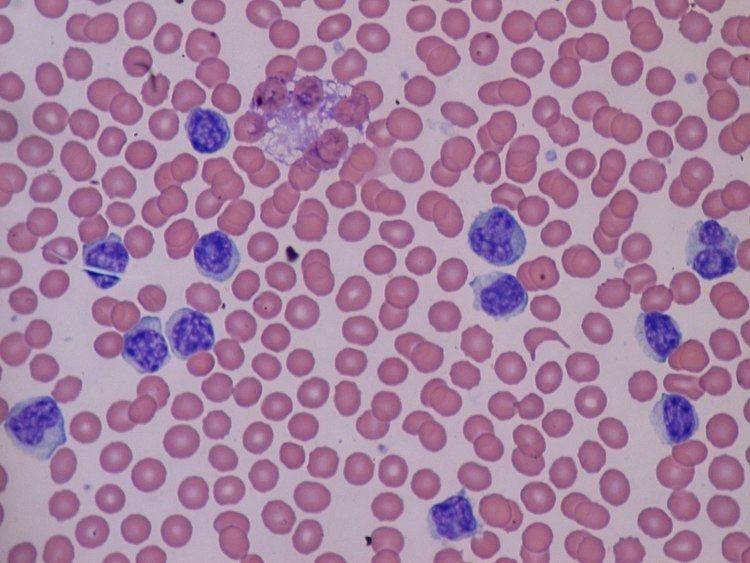Specialty hematology ICD-9-CM 288.8 MeSH D008218 | ICD-10 D72.8 DiseasesDB 7678 | |
 | ||
Lymphocytosis is an increase in the number of lymphocytes in the blood. In adults, lymphocytosis is present when the lymphocyte count is greater than 4000 per microliter (4.0 x 10(9)/L), in older children greater than 7000 per microliter and in infants greater than 9000 per microliter. Lymphocytes normally represent 20 to 40% of circulating white blood cells.
Lymphocytosis is usually detected when a complete blood count is obtained. If not provided the lymphocyte count can be calculated by multiplying the total white blood cell (WBC) count by the percentage of lymphocytes found in the differential count. The lymphocyte count can also be directly measured by flow cytometry.
Causes
Lymphocytosis is a feature of infection, particularly in children. In the elderly, lymphoproliferative disorders, including chronic lymphocytic leukaemia and lymphomas, often present with lymphadenopathy and a lymphocytosis.
Causes of absolute lymphocytosis include:
Causes of relative lymphocytosis include: age less than 2 years; acute viral infections; connective tissue diseases, thyrotoxicosis, Addison's disease, and splenomegaly with splenic sequestration of granulocytes.
